86 papers:
 SANER-2015-OyetoyanFDJ #dependence #empirical
SANER-2015-OyetoyanFDJ #dependence #empirical- Circular dependencies and change-proneness: An empirical study (TDO, JRF, JD, KJ), pp. 241–250.
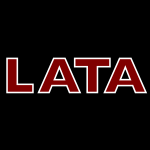 LATA-2015-BartonIP #approximate #string
LATA-2015-BartonIP #approximate #string- Average-Case Optimal Approximate Circular String Matching (CB, CSI, SPP), pp. 85–96.
 FM-2015-ElkaderGPS #automation #reasoning
FM-2015-ElkaderGPS #automation #reasoning- Automated Circular Assume-Guarantee Reasoning (KAE, OG, CSP, SS), pp. 23–39.
 DocEng-2014-UlichneyGS
DocEng-2014-UlichneyGS- Circular coding with interleaving phase (RU, MG, SJS), pp. 21–24.
 PEPM-J-2013-ServettoZ14 #library
PEPM-J-2013-ServettoZ14 #library- A meta-circular language for active libraries (MS, EZ), pp. 219–253.
 AFL-2014-HegedusN #word
AFL-2014-HegedusN #word- Representations of Circular Words (LH, BN), pp. 261–270.
 HCI-AIMT-2014-KuribaraMOST #named #using
HCI-AIMT-2014-KuribaraMOST #named #using- HandyScope: A Remote Control Technique Using Circular Widget on Tabletops (TK, YM, KO, BS, JT), pp. 69–80.
 ICPR-2014-GuerreroR #process
ICPR-2014-GuerreroR #process- Circular Regression Based on Gaussian Processes (PG, JRdS), pp. 3672–3677.
 ICPR-2014-ZhaoTHTY #comparison #performance #segmentation
ICPR-2014-ZhaoTHTY #comparison #performance #segmentation- A Performance Comparison between Circular and Spline-Based Methods for Iris Segmentation (YZ, CT, XH, AOT, RY), pp. 351–356.
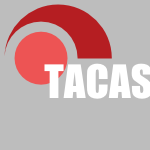 TACAS-2013-LiDDMS #abduction #composition #proving #synthesis
TACAS-2013-LiDDMS #abduction #composition #proving #synthesis- Synthesis of Circular Compositional Program Proofs via Abduction (BL, ID, TD, KLM, MS), pp. 370–384.
 PEPM-2013-ServettoZ #library
PEPM-2013-ServettoZ #library- A meta-circular language for active libraries (MS, EZ), pp. 117–126.
 DLT-2013-MousaviS
DLT-2013-MousaviS- Repetition Avoidance in Circular Factors (HM, JS), pp. 384–395.
 IFM-2013-LucanuR #equivalence #reasoning
IFM-2013-LucanuR #equivalence #reasoning- Program Equivalence by Circular Reasoning (DL, VR), pp. 362–377.
 ICFP-2013-AxelssonC #functional #higher-order #source code #syntax #using
ICFP-2013-AxelssonC #functional #higher-order #source code #syntax #using- Using circular programs for higher-order syntax: functional pearl (EA, KC), pp. 257–262.
 IFL-2013-DanvyTZ #abstraction
IFL-2013-DanvyTZ #abstraction- Circularity and λ Abstraction: From Bird to Pettorossi and back (OD, PT, IZ), p. 85.
 ECOOP-2013-ServettoMPN #composition
ECOOP-2013-ServettoMPN #composition- The Billion-Dollar Fix — Safe Modular Circular Initialisation with Placeholders and Placeholder Types (MS, JM, AP, JN), pp. 205–229.
 SLE-2013-SoderbergH #attribute grammar #higher-order
SLE-2013-SoderbergH #attribute grammar #higher-order- Circular Higher-Order Reference Attribute Grammars (ES, GH), pp. 302–321.
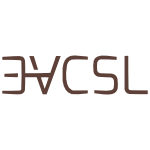 CSL-2013-FortierS #proving #semantics
CSL-2013-FortierS #proving #semantics- Cuts for circular proofs: semantics and cut-elimination (JF, LS), pp. 248–262.
 ICPR-2012-CalvetGC
ICPR-2012-CalvetGC- Camera tracking based on circular point factorization (LC, PG, VC), pp. 2128–2131.
 ICPR-2012-ItoOWK #detection
ICPR-2012-ItoOWK #detection- Detection of eyes by circular Hough transform and histogram of gradient (YI, WO, TW, FK), pp. 1795–1798.
 ICPR-2012-MolnarKJ #multi
ICPR-2012-MolnarKJ #multi- A multi-layer phase field model for extracting multiple near-circular objects (CM, ZK, IJ), pp. 1427–1430.
 ICPR-2012-NiigakiSM #detection #using
ICPR-2012-NiigakiSM #detection #using- Circular object detection based on separability and uniformity of feature distributions using Bhattacharyya Coefficient (HN, JS, MM), pp. 2009–2012.
 ICPR-2012-StrokinaMELK #detection
ICPR-2012-StrokinaMELK #detection- Detection of bubbles as Concentric Circular Arrangements (NS, JM, TE, LL, HK), pp. 2655–2659.
 ICPR-2012-WangHWZ #classification #gender #using
ICPR-2012-WangHWZ #classification #gender #using- Facial image-based gender classification using Local Circular Patterns (CW, DH, YW, GZ), pp. 2432–2435.
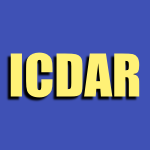 ICDAR-2011-ParodiGB #approach #feature model #invariant #verification
ICDAR-2011-ParodiGB #approach #feature model #invariant #verification- A Circular Grid-Based Rotation Invariant Feature Extraction Approach for Off-line Signature Verification (MP, JCG, AB), pp. 1289–1293.
 PEPM-2011-FernandesSSV #source code #strict
PEPM-2011-FernandesSSV #source code #strict- Strictification of circular programs (JPF, JS, DS, JV), pp. 131–140.
 ICEIS-v1-2011-WangRP #process #research
ICEIS-v1-2011-WangRP #process #research- Research of Circular Logistics Process of Telecommunications Operators (YW, YR, LP), pp. 308–313.
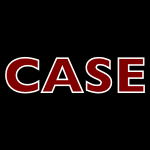 CASE-2010-AhnM #analysis #behaviour #clustering #modelling #tool support
CASE-2010-AhnM #analysis #behaviour #clustering #modelling #tool support- Analysis of circular cluster tools: Transient behavior and semiconductor equipment models (YA, JRM), pp. 39–44.
 DLT-J-2008-MantaciMR10 #word
DLT-J-2008-MantaciMR10 #word- Balance Properties and Distribution of Squares in Circular Words (RM, SM, AR), pp. 647–664.
 ICPR-2010-NguyenD10a #linear
ICPR-2010-NguyenD10a #linear- Circularity Measuring in Linear Time (TPN, IDR), pp. 2098–2101.
 ICPR-2010-PapariCP #detection #novel #using
ICPR-2010-PapariCP #detection #novel #using- Steerable Filtering Using Novel Circular Harmonic Functions with Application to Edge Detection (GP, PC, NP), pp. 3947–3950.
 ICPR-2010-ZhaoGC #higher-order #image #recognition #representation
ICPR-2010-ZhaoGC #higher-order #image #recognition #representation- High-Order Circular Derivative Pattern for Image Representation and Recognition (SZ, YG, TC), pp. 2246–2249.
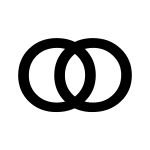 OOPSLA-2010-ServettoZ #composition #java #named
OOPSLA-2010-ServettoZ #composition #java #named- MetaFJig: a meta-circular composition language for Java-like classes (MS, EZ), pp. 464–483.
 SAC-2010-ZeffererK #database
SAC-2010-ZeffererK #database- An electronic-signature based circular resolution database system (TZ, TK), pp. 1840–1845.
 PEPM-2009-PardoFS #higher-order #monad #source code
PEPM-2009-PardoFS #higher-order #monad #source code- Shortcut fusion rules for the derivation of circular and higher-order monadic programs (AP, JPF, JS), pp. 81–90.
 MLDM-2009-NunesSP #detection #image #using
MLDM-2009-NunesSP #detection #image #using- Detection of Masses in Mammographic Images Using Simpson’s Diversity Index in Circular Regions and SVM (APN, ACS, ACdP), pp. 540–553.
 DAC-2008-LinSH #multi #realtime
DAC-2008-LinSH #multi #realtime- A multi-resolution AHB bus tracer for real-time compression of forward/backward traces in a circular buffer (YTL, WCS, IJH), pp. 862–865.
 DLT-2008-MantaciMR #word
DLT-2008-MantaciMR #word- Balance Properties and Distribution of Squares in Circular Words (RM, SM, AR), pp. 504–515.
 ICPR-2008-RabinDG08a #comparison #distance
ICPR-2008-RabinDG08a #comparison #distance- Circular Earth Mover’s Distance for the comparison of local features (JR, JD, YG), pp. 1–4.
 ICPR-2008-TortorellaPM #approach #programming
ICPR-2008-TortorellaPM #approach #programming- A Dynamic Programming approach for segmenting digital planar curves into line segments and circular arcs (FT, RP, MM), pp. 1–4.
 ICDAR-2007-MengZZS #documentation #image
ICDAR-2007-MengZZS #documentation #image- Circular Noises Removal from Scanned Document Images (GM, NZ, YZ, YS), pp. 183–187.
 ICPC-2007-CornelissenHZMWD #comprehension #execution #sequence #using
ICPC-2007-CornelissenHZMWD #comprehension #execution #sequence #using- Understanding Execution Traces Using Massive Sequence and Circular Bundle Views (BC, DH, AZ, LM, JJvW, AvD), pp. 49–58.
 PEPM-2007-FernandesS #library #source code #tool support
PEPM-2007-FernandesS #library #source code #tool support- Tools and libraries to model and manipulate circular programs (JPF, JS), pp. 102–111.
 LDTA-J-2003-MagnussonH #attribute grammar #evaluation
LDTA-J-2003-MagnussonH #attribute grammar #evaluation- Circular reference attributed grammars — their evaluation and applications (EM, GH), pp. 21–37.
 CASE-2005-ChenJL
CASE-2005-ChenJL- Right-circular corner-filleted flexure hinges (GMC, JJ, ZL), pp. 249–253.
 FASE-2005-HausmannMS #higher-order #induction
FASE-2005-HausmannMS #higher-order #induction- Iterative Circular Coinduction for CoCasl in Isabelle/HOL (DH, TM, LS), pp. 341–356.
 DATE-v2-2004-ArslanO #architecture #named #reduction
DATE-v2-2004-ArslanO #architecture #named #reduction- CircularScan: A Scan Architecture for Test Cost Reduction (BA, AO), pp. 1290–1295.
 ITiCSE-2004-Sher #implementation #queue
ITiCSE-2004-Sher #implementation #queue- A simple implementation of a queue with a circularly linked list (DBS), p. 274.
 ICPR-v1-2004-ColemanSH #design #scalability
ICPR-v1-2004-ColemanSH #design #scalability- A Systematic Design Procedure for Scalable Near-Circular Laplacian of Gaussian Operators (SAC, BWS, MGH), pp. 700–703.
 ICPR-v2-2004-FlusserZ #invariant #symmetry
ICPR-v2-2004-FlusserZ #invariant #symmetry- Invariants to Convolution with Circularly Symmetric PSF (JF, BZ), pp. 11–14.
 ICPR-v3-2004-BakerB
ICPR-v3-2004-BakerB- Principal Flow for Tubular Objects with Non-Circular Cross-Sections (GB, NB), pp. 750–753.
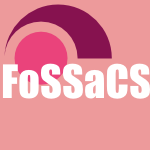 FoSSaCS-2003-Maier #composition
FoSSaCS-2003-Maier #composition- Compositional Circular Assume-Guarantee Rules Cannot Be Sound and Complete (PM), pp. 343–357.
 FoSSaCS-2003-SprengerD #calculus #induction #on the #proving #reasoning #μ-calculus
FoSSaCS-2003-SprengerD #calculus #induction #on the #proving #reasoning #μ-calculus- On the Structure of Inductive Reasoning: Circular and Tree-Shaped Proofs in the μ-Calculus (CS, MD), pp. 425–440.
 LDTA-2003-MagnussonH #attribute grammar #evaluation
LDTA-2003-MagnussonH #attribute grammar #evaluation- Circular Reference Attributed Grammars — Their Evaluation and Applications (EM, GH), pp. 532–554.
 FoSSaCS-2002-Santocanale #calculus #category theory #proving #semantics
FoSSaCS-2002-Santocanale #calculus #category theory #proving #semantics- A Calculus of Circular Proofs and Its Categorical Semantics (LS), pp. 357–371.
 ASIA-PEPM-2002-Voigtlander #parametricity #source code #using
ASIA-PEPM-2002-Voigtlander #parametricity #source code #using- Using circular programs to deforest in accumulating parameters (JV), pp. 126–137.
 DLT-2002-BonizzoniFMZ #linear #problem
DLT-2002-BonizzoniFMZ #linear #problem- Decision Problems for Linear and Circular Splicing Systems (PB, CdF, GM, RZ), pp. 78–92.
 DLT-2002-CurrieF #word
DLT-2002-CurrieF #word- Circular Words Avoiding Patterns (JDC, DSF), pp. 319–325.
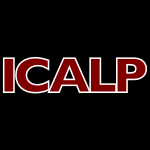 ICALP-2002-Liberatore
ICALP-2002-Liberatore- Circular Arrangements (VL), pp. 1054–1066.
 IFL-2002-Trancon-y-Widemann #functional
IFL-2002-Trancon-y-Widemann #functional- Stacking Cycles: Functional Transformation of Circular Data (BTyW), pp. 150–164.
 ICPR-v2-2002-MaWT #recognition #symmetry #using
ICPR-v2-2002-MaWT #recognition #symmetry #using- Iris Recognition Using Circular Symmetric Filters (LM, YW, TT), pp. 414–417.
 ICPR-v2-2002-ZhangTM #invariant #segmentation
ICPR-v2-2002-ZhangTM #invariant #segmentation- Invariant Texture Segmentation Via Circular Gabor Filters (JZ, TT, LM), pp. 901–904.
 ICDAR-2001-AntonacopoulosK #information management
ICDAR-2001-AntonacopoulosK #information management- Information Extraction from Complex Circular Charts (AA, DPK), pp. 784–789.
 ICALP-2001-ViswanathanV #composition #reasoning
ICALP-2001-ViswanathanV #composition #reasoning- Foundations for Circular Compositional Reasoning (MV, RV), pp. 835–847.
 ASE-2000-GoguenLR #induction
ASE-2000-GoguenLR #induction- Circular Coinductive Rewriting (JAG, KL, GR), pp. 123–132.
 ICPR-v1-2000-AricaY #markov
ICPR-v1-2000-AricaY #markov- A Shape Descriptor Based on Circular Hidden Markov Mode (NA, FTYV), pp. 1924–1927.
 ICPR-v2-2000-GhaderiW #analysis
ICPR-v2-2000-GhaderiW #analysis- Circular ECOC: A Theoretical and Experimental Analysis (RG, TW), pp. 2203–2206.
 FoSSaCS-1999-Lenisa #bisimulation #equivalence #induction #logic
FoSSaCS-1999-Lenisa #bisimulation #equivalence #induction #logic- A Complete Coinductive Logical System for Bisimulation Equivalence on Circular Objects (ML), pp. 243–257.
 ICPR-1998-KawasueSI #using
ICPR-1998-KawasueSI #using- Range finder using circular dynamic stereo (KK, OS, TI), pp. 774–776.
 ICALP-1996-KloksKW #graph
ICALP-1996-KloksKW #graph- Minimum Fill-In on Circle and Circular-Arc Graphs (TK, DK, CKW), pp. 256–267.
 ICPR-1996-LamY #detection #performance
ICPR-1996-LamY #detection #performance- Efficient circular object detection with hypothesis filtering strategy and Hough transform (WCYL, SYY), pp. 542–546.
 ICPR-1996-MullotOBLC #approach
ICPR-1996-MullotOBLC #approach- An original approach for extracting circular shapes from technical charts (RM, JMO, FB, YL, MFC), pp. 813–817.
 ICPR-1996-StefanoFTV #distance #using
ICPR-1996-StefanoFTV #distance #using- A distance measure for structural descriptions using circular arcs as primitives (CDS, PF, FT, MV), pp. 290–294.
 ICPR-1996-StoschekYH #2d #detection #invariant #multi #robust #using
ICPR-1996-StoschekYH #2d #detection #invariant #multi #robust #using- Rotation-invariant and robust multiple-2D-object detection using steerable pyramid denoising and optimized circular harmonic filters (AS, TPYY, RH), pp. 376–380.
 ICPR-1996-ZhengMFA #3d #modelling #re-engineering #using
ICPR-1996-ZhengMFA #3d #modelling #re-engineering #using- Reconstruction of 3D models from specular motion using circular lights (JYZ, AM, YF, NA), pp. 869–873.
 ICDAR-v2-1995-ShikuNATK #using
ICDAR-v2-1995-ShikuNATK #using- Extraction of slant character candidates from maps using circular templates (OS, AN, MA, HT, HK), pp. 936–939.
 ICDAR-v2-1995-TsengLT #image #segmentation
ICDAR-v2-1995-TsengLT #image #segmentation- Circular histogram thresholding for color image segmentation (DCT, YFL, CTT), pp. 673–676.
 ICALP-1993-MignosiS
ICALP-1993-MignosiS- If a D0L Language is k-Power Free then it is Circular (FM, PS), pp. 507–518.
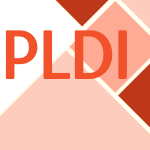 PLDI-1991-Jain #pipes and filters #scheduling
PLDI-1991-Jain #pipes and filters #scheduling- Circular Scheduling: A New Technique to Perform Software Pipelining (SJ), pp. 219–228.
 WAGA-1990-AttaliC #evaluation #functional #specification
WAGA-1990-AttaliC #evaluation #functional #specification- Functional Evaluation of Strongly Non Circular Typol Specifications (IA, JC), pp. 157–176.
 POPL-1989-SagivEFR #analysis #attribute grammar #data flow
POPL-1989-SagivEFR #analysis #attribute grammar #data flow- Resolving Circularity in Attribute Grammars with Applications to Data Flow Analysis (SS, OE, NF, MR), pp. 36–48.
 PLDI-1988-WalzJ #attribute grammar #evaluation #incremental
PLDI-1988-WalzJ #attribute grammar #evaluation #incremental- Incremental Evaluation for a General Class of Circular Attribute Grammars (JAW, GFJ), pp. 209–221.
 DAC-1987-KrasniewskiP #low cost #self
DAC-1987-KrasniewskiP #low cost #self- Circular Self-Test Path: A Low-Cost BIST Technique (AK, SP), pp. 407–415.
 SCC-1984-Jourdan #attribute grammar #evaluation #recursion
SCC-1984-Jourdan #attribute grammar #evaluation #recursion- Strongly non-circular attribute grammars and their recursive evaluation (MJ), pp. 81–93.
 ICALP-1981-Sethi
ICALP-1981-Sethi- Circular Expressions: Elimination of Static Environments (RS), pp. 378–392.
 POPL-1975-JazayeriOR #attribute grammar #complexity #on the
POPL-1975-JazayeriOR #attribute grammar #complexity #on the- On the Complexity of the Circularity Test for Attribute Grammars (MJ, WFO, WCR), pp. 119–129.
 SANER-2015-OyetoyanFDJ #dependence #empirical
SANER-2015-OyetoyanFDJ #dependence #empirical LATA-2015-BartonIP #approximate #string
LATA-2015-BartonIP #approximate #string FM-2015-ElkaderGPS #automation #reasoning
FM-2015-ElkaderGPS #automation #reasoning DocEng-2014-UlichneyGS
DocEng-2014-UlichneyGS PEPM-J-2013-ServettoZ14 #library
PEPM-J-2013-ServettoZ14 #library AFL-2014-HegedusN #word
AFL-2014-HegedusN #word HCI-AIMT-2014-KuribaraMOST #named #using
HCI-AIMT-2014-KuribaraMOST #named #using ICPR-2014-GuerreroR #process
ICPR-2014-GuerreroR #process ICPR-2014-ZhaoTHTY #comparison #performance #segmentation
ICPR-2014-ZhaoTHTY #comparison #performance #segmentation TACAS-2013-LiDDMS #abduction #composition #proving #synthesis
TACAS-2013-LiDDMS #abduction #composition #proving #synthesis PEPM-2013-ServettoZ #library
PEPM-2013-ServettoZ #library DLT-2013-MousaviS
DLT-2013-MousaviS IFM-2013-LucanuR #equivalence #reasoning
IFM-2013-LucanuR #equivalence #reasoning ICFP-2013-AxelssonC #functional #higher-order #source code #syntax #using
ICFP-2013-AxelssonC #functional #higher-order #source code #syntax #using IFL-2013-DanvyTZ #abstraction
IFL-2013-DanvyTZ #abstraction ECOOP-2013-ServettoMPN #composition
ECOOP-2013-ServettoMPN #composition SLE-2013-SoderbergH #attribute grammar #higher-order
SLE-2013-SoderbergH #attribute grammar #higher-order CSL-2013-FortierS #proving #semantics
CSL-2013-FortierS #proving #semantics ICPR-2012-CalvetGC
ICPR-2012-CalvetGC ICPR-2012-ItoOWK #detection
ICPR-2012-ItoOWK #detection ICPR-2012-MolnarKJ #multi
ICPR-2012-MolnarKJ #multi ICPR-2012-NiigakiSM #detection #using
ICPR-2012-NiigakiSM #detection #using ICPR-2012-StrokinaMELK #detection
ICPR-2012-StrokinaMELK #detection ICPR-2012-WangHWZ #classification #gender #using
ICPR-2012-WangHWZ #classification #gender #using ICDAR-2011-ParodiGB #approach #feature model #invariant #verification
ICDAR-2011-ParodiGB #approach #feature model #invariant #verification PEPM-2011-FernandesSSV #source code #strict
PEPM-2011-FernandesSSV #source code #strict ICEIS-v1-2011-WangRP #process #research
ICEIS-v1-2011-WangRP #process #research CASE-2010-AhnM #analysis #behaviour #clustering #modelling #tool support
CASE-2010-AhnM #analysis #behaviour #clustering #modelling #tool support DLT-J-2008-MantaciMR10 #word
DLT-J-2008-MantaciMR10 #word ICPR-2010-NguyenD10a #linear
ICPR-2010-NguyenD10a #linear ICPR-2010-PapariCP #detection #novel #using
ICPR-2010-PapariCP #detection #novel #using ICPR-2010-ZhaoGC #higher-order #image #recognition #representation
ICPR-2010-ZhaoGC #higher-order #image #recognition #representation OOPSLA-2010-ServettoZ #composition #java #named
OOPSLA-2010-ServettoZ #composition #java #named SAC-2010-ZeffererK #database
SAC-2010-ZeffererK #database PEPM-2009-PardoFS #higher-order #monad #source code
PEPM-2009-PardoFS #higher-order #monad #source code MLDM-2009-NunesSP #detection #image #using
MLDM-2009-NunesSP #detection #image #using DAC-2008-LinSH #multi #realtime
DAC-2008-LinSH #multi #realtime DLT-2008-MantaciMR #word
DLT-2008-MantaciMR #word ICPR-2008-RabinDG08a #comparison #distance
ICPR-2008-RabinDG08a #comparison #distance ICPR-2008-TortorellaPM #approach #programming
ICPR-2008-TortorellaPM #approach #programming ICDAR-2007-MengZZS #documentation #image
ICDAR-2007-MengZZS #documentation #image ICPC-2007-CornelissenHZMWD #comprehension #execution #sequence #using
ICPC-2007-CornelissenHZMWD #comprehension #execution #sequence #using PEPM-2007-FernandesS #library #source code #tool support
PEPM-2007-FernandesS #library #source code #tool support LDTA-J-2003-MagnussonH #attribute grammar #evaluation
LDTA-J-2003-MagnussonH #attribute grammar #evaluation CASE-2005-ChenJL
CASE-2005-ChenJL FASE-2005-HausmannMS #higher-order #induction
FASE-2005-HausmannMS #higher-order #induction DATE-v2-2004-ArslanO #architecture #named #reduction
DATE-v2-2004-ArslanO #architecture #named #reduction ITiCSE-2004-Sher #implementation #queue
ITiCSE-2004-Sher #implementation #queue ICPR-v1-2004-ColemanSH #design #scalability
ICPR-v1-2004-ColemanSH #design #scalability ICPR-v2-2004-FlusserZ #invariant #symmetry
ICPR-v2-2004-FlusserZ #invariant #symmetry ICPR-v3-2004-BakerB
ICPR-v3-2004-BakerB FoSSaCS-2003-Maier #composition
FoSSaCS-2003-Maier #composition FoSSaCS-2003-SprengerD #calculus #induction #on the #proving #reasoning #μ-calculus
FoSSaCS-2003-SprengerD #calculus #induction #on the #proving #reasoning #μ-calculus LDTA-2003-MagnussonH #attribute grammar #evaluation
LDTA-2003-MagnussonH #attribute grammar #evaluation FoSSaCS-2002-Santocanale #calculus #category theory #proving #semantics
FoSSaCS-2002-Santocanale #calculus #category theory #proving #semantics ASIA-PEPM-2002-Voigtlander #parametricity #source code #using
ASIA-PEPM-2002-Voigtlander #parametricity #source code #using DLT-2002-BonizzoniFMZ #linear #problem
DLT-2002-BonizzoniFMZ #linear #problem DLT-2002-CurrieF #word
DLT-2002-CurrieF #word ICALP-2002-Liberatore
ICALP-2002-Liberatore IFL-2002-Trancon-y-Widemann #functional
IFL-2002-Trancon-y-Widemann #functional ICPR-v2-2002-MaWT #recognition #symmetry #using
ICPR-v2-2002-MaWT #recognition #symmetry #using ICPR-v2-2002-ZhangTM #invariant #segmentation
ICPR-v2-2002-ZhangTM #invariant #segmentation ICDAR-2001-AntonacopoulosK #information management
ICDAR-2001-AntonacopoulosK #information management ICALP-2001-ViswanathanV #composition #reasoning
ICALP-2001-ViswanathanV #composition #reasoning ASE-2000-GoguenLR #induction
ASE-2000-GoguenLR #induction ICPR-v1-2000-AricaY #markov
ICPR-v1-2000-AricaY #markov ICPR-v2-2000-GhaderiW #analysis
ICPR-v2-2000-GhaderiW #analysis FoSSaCS-1999-Lenisa #bisimulation #equivalence #induction #logic
FoSSaCS-1999-Lenisa #bisimulation #equivalence #induction #logic ICPR-1998-KawasueSI #using
ICPR-1998-KawasueSI #using ICALP-1996-KloksKW #graph
ICALP-1996-KloksKW #graph ICPR-1996-LamY #detection #performance
ICPR-1996-LamY #detection #performance ICPR-1996-MullotOBLC #approach
ICPR-1996-MullotOBLC #approach ICPR-1996-StefanoFTV #distance #using
ICPR-1996-StefanoFTV #distance #using ICPR-1996-StoschekYH #2d #detection #invariant #multi #robust #using
ICPR-1996-StoschekYH #2d #detection #invariant #multi #robust #using ICPR-1996-ZhengMFA #3d #modelling #re-engineering #using
ICPR-1996-ZhengMFA #3d #modelling #re-engineering #using ICDAR-v2-1995-ShikuNATK #using
ICDAR-v2-1995-ShikuNATK #using ICDAR-v2-1995-TsengLT #image #segmentation
ICDAR-v2-1995-TsengLT #image #segmentation ICALP-1993-MignosiS
ICALP-1993-MignosiS PLDI-1991-Jain #pipes and filters #scheduling
PLDI-1991-Jain #pipes and filters #scheduling WAGA-1990-AttaliC #evaluation #functional #specification
WAGA-1990-AttaliC #evaluation #functional #specification POPL-1989-SagivEFR #analysis #attribute grammar #data flow
POPL-1989-SagivEFR #analysis #attribute grammar #data flow PLDI-1988-WalzJ #attribute grammar #evaluation #incremental
PLDI-1988-WalzJ #attribute grammar #evaluation #incremental DAC-1987-KrasniewskiP #low cost #self
DAC-1987-KrasniewskiP #low cost #self SCC-1984-Jourdan #attribute grammar #evaluation #recursion
SCC-1984-Jourdan #attribute grammar #evaluation #recursion ICALP-1981-Sethi
ICALP-1981-Sethi POPL-1975-JazayeriOR #attribute grammar #complexity #on the
POPL-1975-JazayeriOR #attribute grammar #complexity #on the









